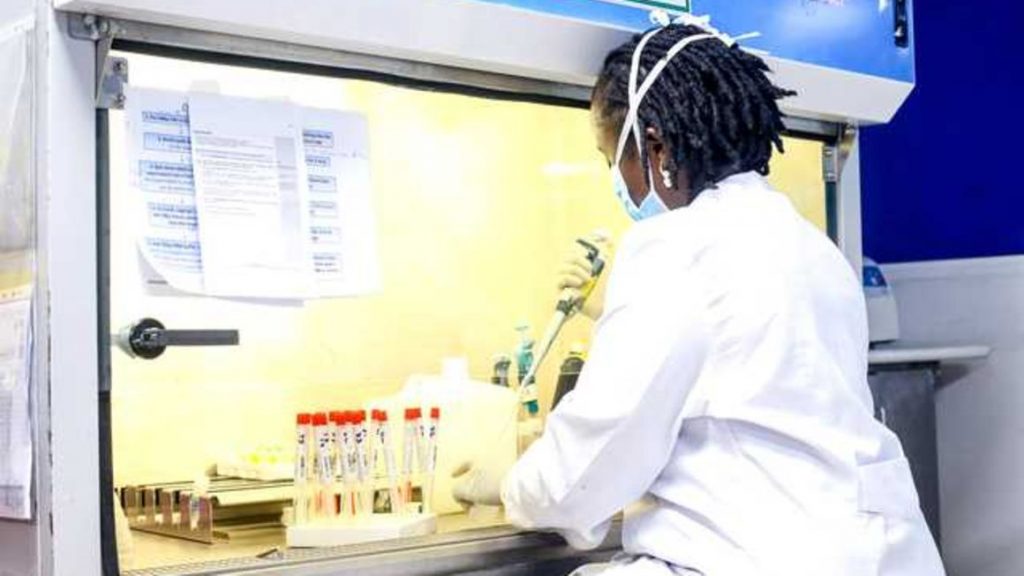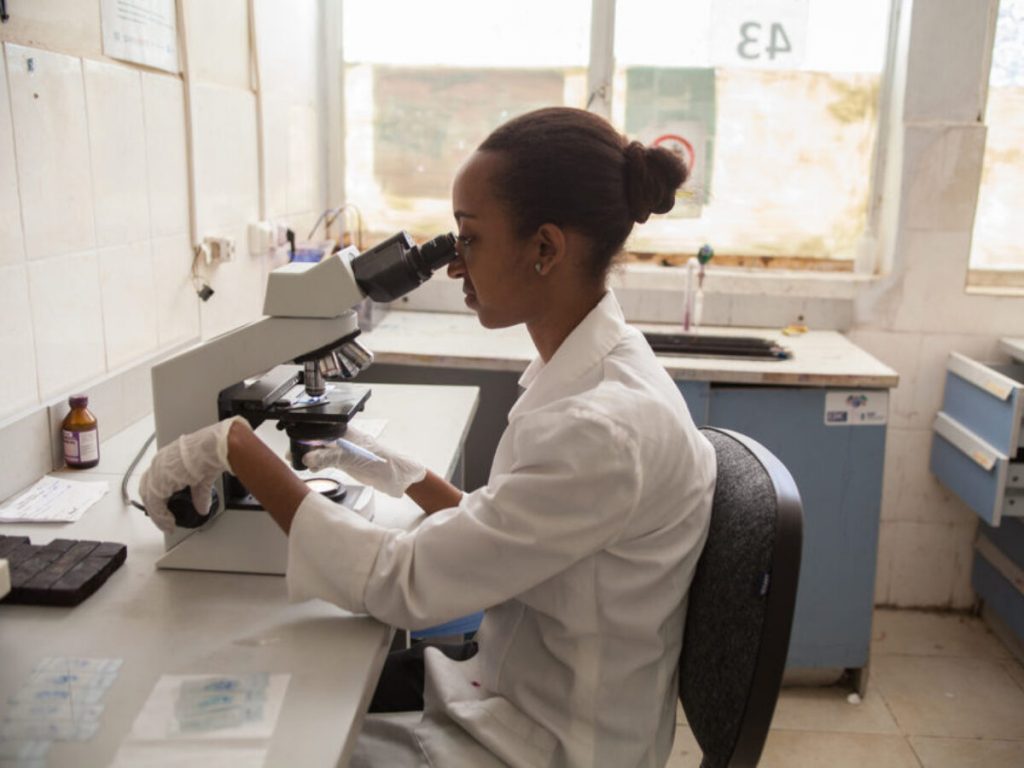
Africa’s low testing on anti-microbial resistance has been blamed on lack of lab facilities. A study across 14 sub-Saharan Africa found that only five out of the 15 antibiotic-resistant pathogens prioritised by the World Health Organisation for surveillance are being consistently tested — and all five had a higher-than-expected prevalence.
The patchy surveillance is compounding an obscure but complex problem that threatens to jeopardise achievement of Universal Health Coverage (UHC) and lead up to catastrophic health outcomes.
In the countries included in the study only 1.3 percent of medical laboratories there conduct any bacteriology testing.
The erratic use of available antibiotics, also contributes to resistance.
New data on antimicrobial resistance (AMR) from the 14 countries released Thursday at a meeting held at the African Union in Addis Ababa, reveals the under-reported depth of the AMR crisis.
“When pathogens are repeatedly exposed to an insufficient dose or an abbreviated treatment time of antimicrobials they may survive and evolve into resistant strains. These new strains lose their susceptibility to antimicrobials that had previously been effective — creating antimicrobial resistance. Resistant pathogens can be transmitted through contamination, but also can pass their mutation mechanisms to similar ‘bystander’ pathogens, and the resistant infections spread,” said the study.
The results provide stark insights on a health situation the research describes as dire and “a crisis within the crisis” that needs urgent policy interventions.

The report says AMR pathogens of immediate concern include Enterobacterales a large order of bacteria that includes E.coli, a common food poisoning infection, and Klebsiella pneumoniae, a common infection in health care settings. More than half of all samples tested were resistant to penicillins and cephalosporins.
Poor data foundations
More than 40 percent of samples tested were classified as methicillin-resistant Staphylococcus aureus (MRSA), a lethal pathogen, drug resistance combination that globally accounted for more than 100,000 deaths in 2019. It is the source of a skin infection that can turn deadly if drug resistant.
Pseudomonas aeruginosa is bacteria common in hospitalised patients can cause infections in the blood, lungs (pneumonia), and other parts of the body after surgeries. More than 30 percent of samples tested were resistant to Carbapenems, a class of antibiotics used to treat infections that have not responded to commonly available drugs. Resistance to these is a grave threat.
The researchers warned, “Failing to consistently test for all priority resistant pathogens translates to substandard care, where antimicrobials are used to treat infections without first determining whether they will be effective. But retrospective lab records collected also revealed that clinical and treatment data were not included in lab results.”
“Africa is struggling to fight drug-resistant pathogens, just like the rest of the world,” said Director of Science and New Initiatives of the African Society for Laboratory Medicine (ASLM), Dr Pascale Ondoa. “This study shines much-needed light on the crisis within the crisis.”
The results of the study, which was supported by the Fleming Fund, provide insights into the AMR burden and antimicrobial consumption in the 14 countries; areas where most available data on AMR is only based on statistical modelling.
The WHO has warned that AMR is one of our time’s leading global public health threats. A study estimated that, in 2019, nearly 1.3 million deaths globally were attributed to antimicrobial resistant bacterial infections. Africa had the highest mortality rate from AMR infections in the world, with 24 deaths per 100,000 attributable to AMR.
Furthermore, current estimates of AMR are based on poor data foundations in low- and middle income countries, and especially in Africa, hence limiting understanding of the efficacy of commonly used antimicrobials as well as the drivers of resistance in humans.
Across the 14 countries, clinical and treatment data are not being linked to lab results, making it hard to understand what’s driving AMR. Out of almost 187,000 samples tested for AMR, around 88 percent had no information on patients’ clinical profile, including diagnosis or origin of infection, presence of indwelling devices (such as urinary catheters, feeding tubes and wound drains) often associated with development of healthcare-associated infection, comorbidities, or antimicrobial usage.
Based on the findings, MAAP is calling for a drastic increase in the quality and quantity of AMR and AMC data being collected across the continent, along with revised AMR control strategies and research priorities.
“The future of modern medicine and our ability to treat infectious diseases reliably hinges on our ability to control AMR,” said Director and President, One Health Trust Dr Ramanan Laxminarayan.
Researchers found that most laboratories across Africa are not ready for AMR testing with only 1.3 percent of the 50,000 medical laboratories forming the laboratory networks of the 14 participating countries conduct bacteriology testing. And of those, only a fraction can handle the scientific processes needed to evaluate AMR. Researchers also found that in eight of the 14 countries, more than half of the population is out of reach of any bacteriology laboratory.
“Across Africa, even where data on AMR is collected, it is not always accessible, often recorded by hand, and rarely consolidated or shared with policy makers,” said chief executive officer for ASLM, Nqobile Ndlovu.
“As a result, health experts are flying blind and cannot develop and deploy policies that would limit or curtail antimicrobial resistance.”
“This study is an important step forward for Africa’s health systems and the health of people across the continent. I hope MAAP inspires more investment in essential data collection and desperately needed resources.”
According to the researchers, while the common understanding is that AMR is usually driven by incorrect or excessive consumption of antimicrobials, many African populations still lack access to effective and affordable medicines, emphasizing the need to address AMR by improving universal health. Little information exists on how resistance patterns are affected by the use of standard (and non-standard) antimicrobial medicines in human health or in agriculture and food production systems — those used to produce livestock, crops, fish, and even in beekeeping.
There is also a dearth of information on antimicrobial consumption and antimicrobial use in Africa — both in human medicine and for agriculture and food production systems. Without understanding antimicrobial usage, effectiveness and resistance patterns, health experts cannot develop and deploy policies that would limit or curtail AMR.
“The disconnect between patient data and antimicrobial resistance results, coupled with the extreme antimicrobial resistance burden, makes it incredibly difficult to provide accurate guidelines for patient care and wider public health policies,” said Dr Yewande Alimi, Africa CDC AMR Programme Coordinator. “Hence, collecting and connecting laboratory, pharmacy and clinical data will be essential to provide a baseline and a reference for public health actions.”
Antibiotic groups
The research also found that only four drugs comprised more than two-thirds (67 percent) of all the antibiotics used in healthcare settings. Stronger medicines to treat more resistant infections (such as severe pneumonia, sepsis, and complicated intra-abdominal infections) were not available, suggesting limited access to some groups of antibiotics.
“Collectively, the data highlights a dual problem of limited access to antibiotics, and irrational use of those that are available,” said Head of Public Health (Africa and Middle East) and Head of Real World Evidence (Middle East) at IQVIA, Deepak Batra. “As a result, people don’t get the right treatment for severe infections, and irrational use of antibiotics drives antimicrobial resistance for existing available treatment options. Routine monitoring of antimicrobial consumption could help monitor the limited access and irrational use.”
The researchers said the growing threat of AMR poses a major threat to progress made in health and in the attainment of Universal Health Coverage, and is likely to take a heavy toll on the health systems on the continent.
SOURCE: THE EASTAFRICAN
